Do you have a patio that constantly has weeds coming up between the slabs? Perhaps some of them have tough chunky roots squashed into the tight cracks and it’s impossible to get them out? There’s no need to turn to weedkiller thanks to my five step plan to go from weedy to flower-filled floofy in a few short months.
I see weeds as a good thing (read more about them in my book Wild about Weeds) and some flowering in or around your patio is good for you and wildlife. However, sometimes they get out of control and need some attention. For me, I want to increase diversity, wildlife value and colour on our patio by reducing grasses and dandelions, making way for a few more variety of flower species. Best yet, the new plants will reduce the weeds in future, permanently.
Step one: boiling water
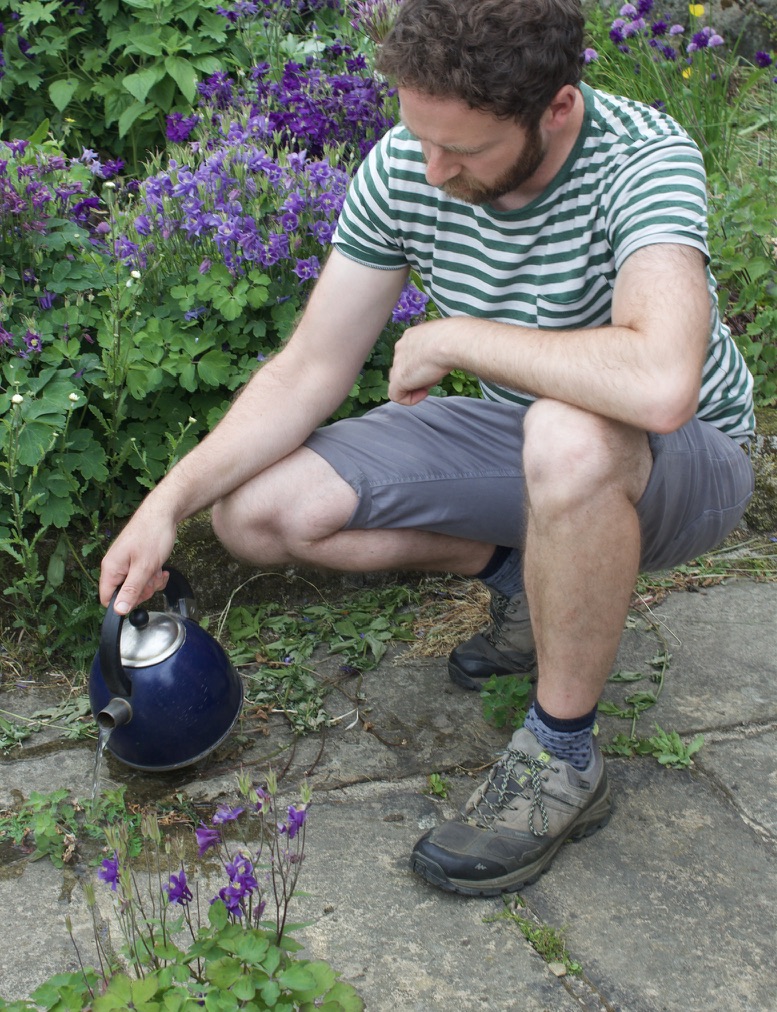
One of the easiest ways of dealing with weeds between cracks is to cook them with boiling water. This is particularly effective on dandelions but works for everything. You have to get the water to the roots, so pour it down into the cracks, not on the top of the plant. Directing carefully at the weed’s roots ensures you kill only that plant and minimises the amount of water running elsewhere. Be careful not to scold yourself too, especially with water running over the top of the stone. Pour enough on that it will penetrate deep in the lower roots to make sure the plant doesn’t come back – repeat in a week or so if new growth is seen.
Step two: patio weed remover
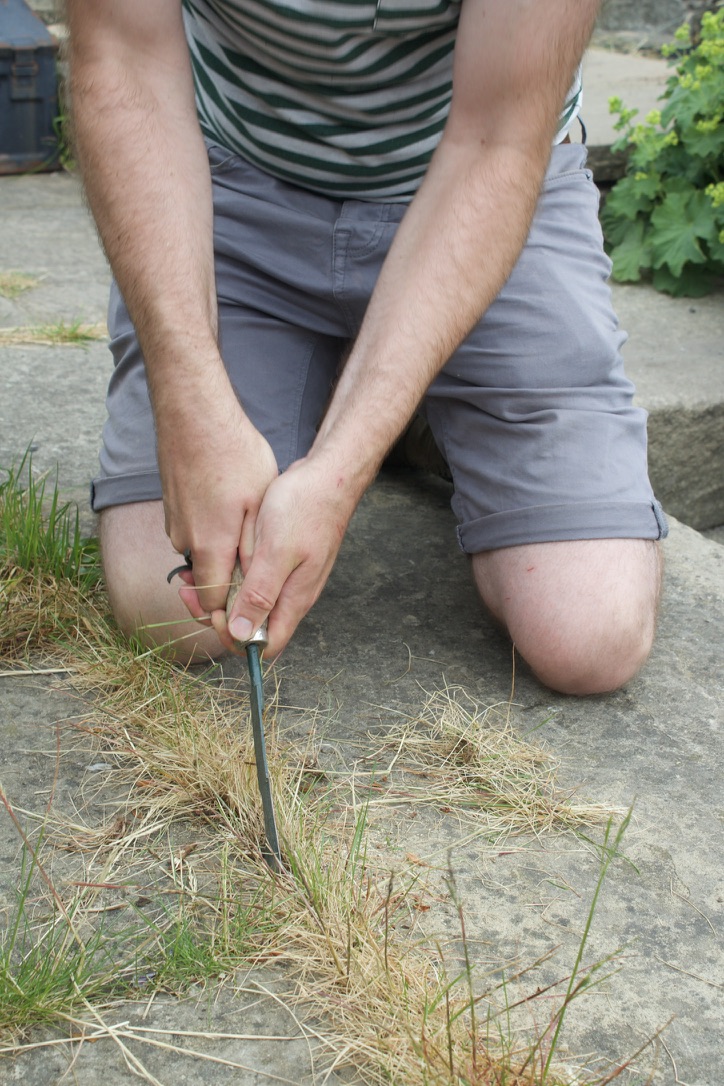
This handy tool, also called a hand hoe for in borders, the patio weed remover is perfectly shaped for angling into cracks under weeds to lever out their roots. It’s one of my favourite tools and particularly helpful with wedged in grasses.
Step three: patio weed brush
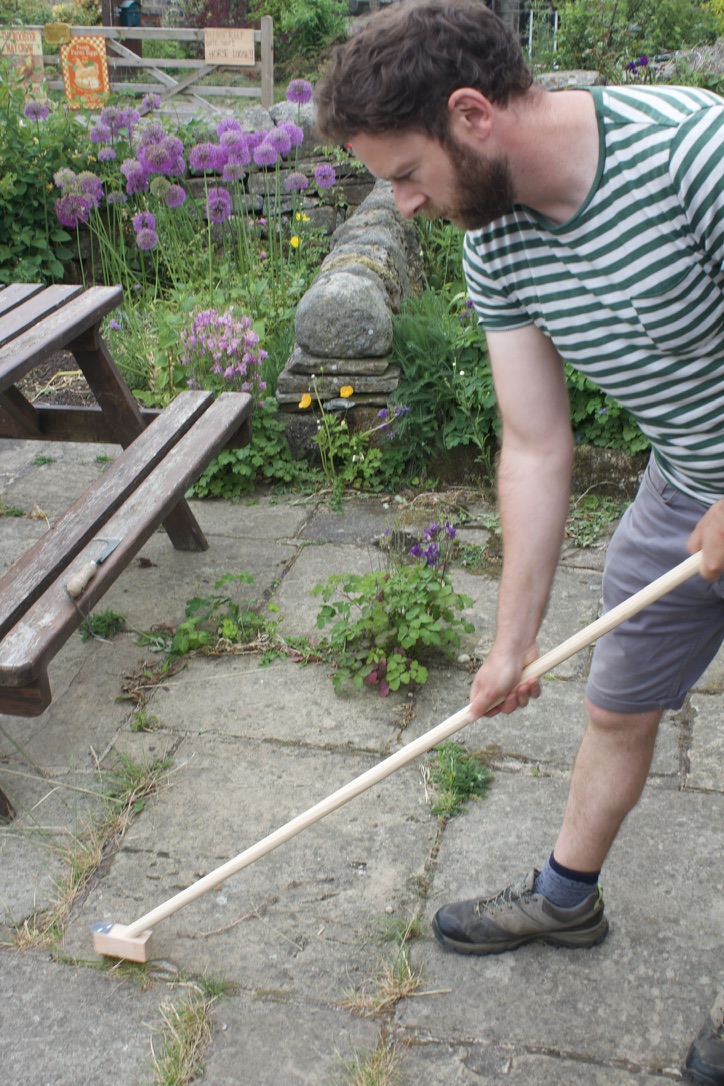
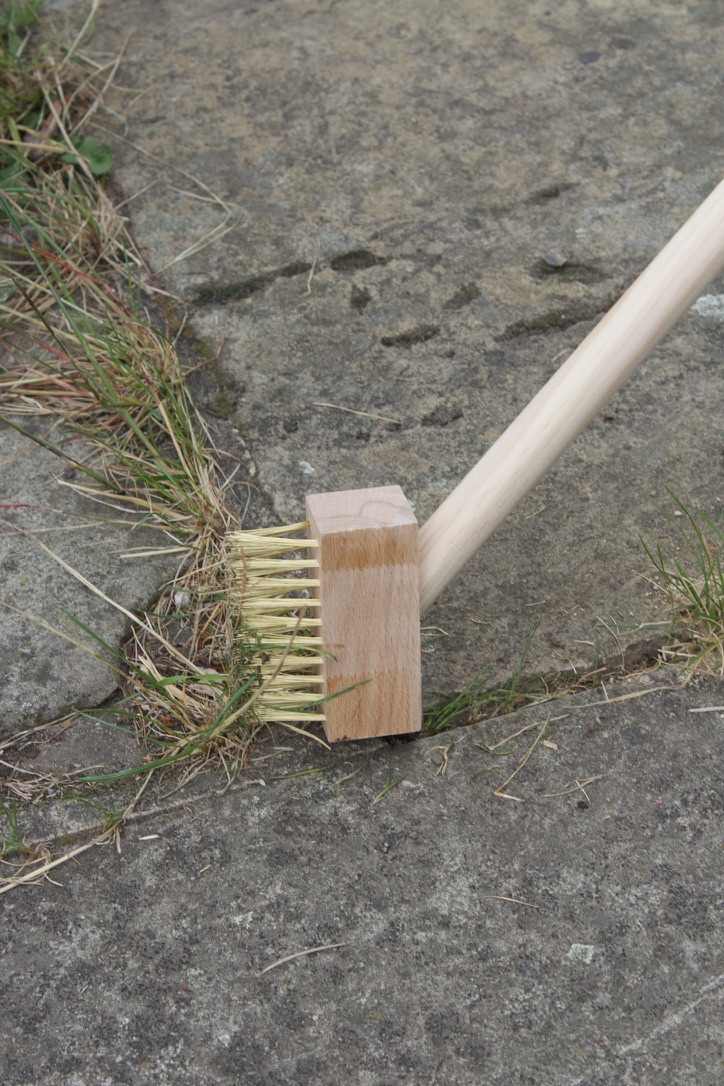
Very simple but not well known! A weed brush is a long handled tool with metal bristles used for scrubbing the weeds out of the cracks between the paving. It comes with a sharp scraper too for getting any troublesome weeds out. Using both the scraper and the scrubbing bristles, you scrape and scrub the weeds away. It won’t kill all of the roots on deep growing weeds, but it will tackle moss and weaken other plants. Keep using it and eventually you’ll get on top of them all.
Step four: introduce other plants
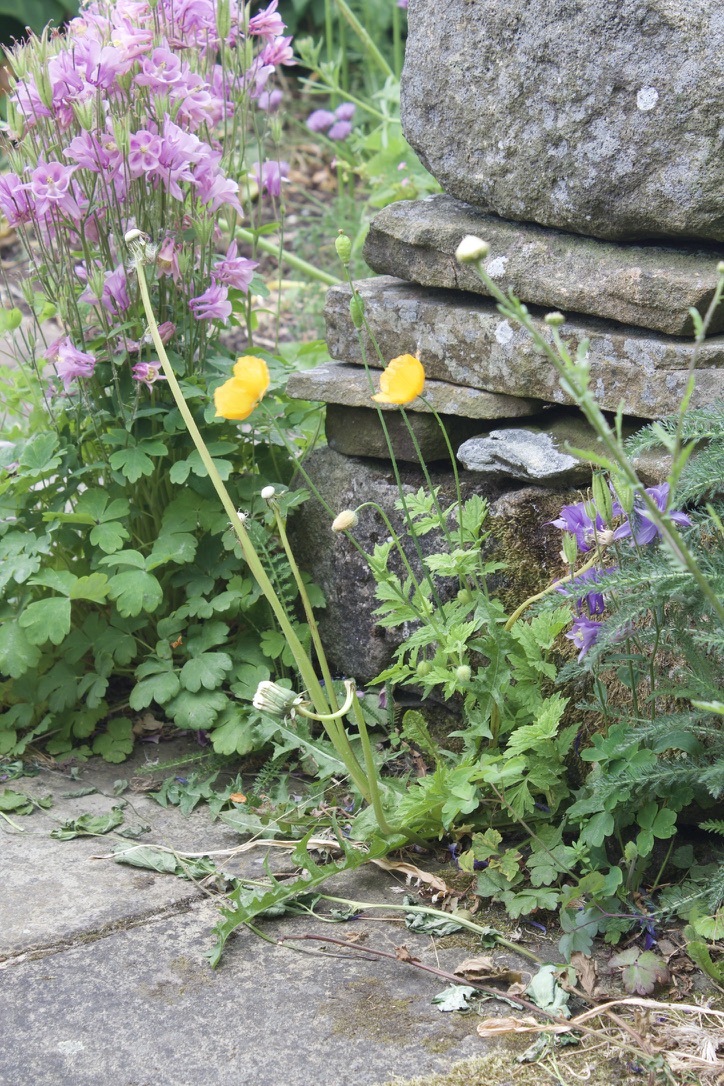
Personally I like a patio with plants growing through the cracks, it adds character, wildlife value and colour. Done well, it can look timeless, romantic and floofy. One of the benefits of growing plants you like in the cracks is that they will go a long way to blocking access for unwanted weed seeds to get in and sow themselves. Plants blocking plants.
Some plants I’m introducing include the very short Thymus serpyllum (creeping thyme), low sedums (Hylotelephium) and Sempervivum. Others already growing in the patio I’ll encourage to spread are self sowing Aquilegia vulgaris, Alchemilla mollis, welsh poppy, Cymbalaria muralis (ivy-leaved toadflax) and Achillea millefolium. I’d like height in the outside corners and I’m establishing fennel, Verbena bonariensis and chamomile.
Plants like this will take some time to establish and spread, meaning you will have to keep on top of the unwanted weeds for a few months or the next year until there are enough of them. Introduce them by seed or very tiny plug plant. Seed is easiest. Get one plant to establish and flower and you’ll have unlimited seeds naturally adding themselves to the cracks forever more in future.
Step five: repair mortar pointing in some places
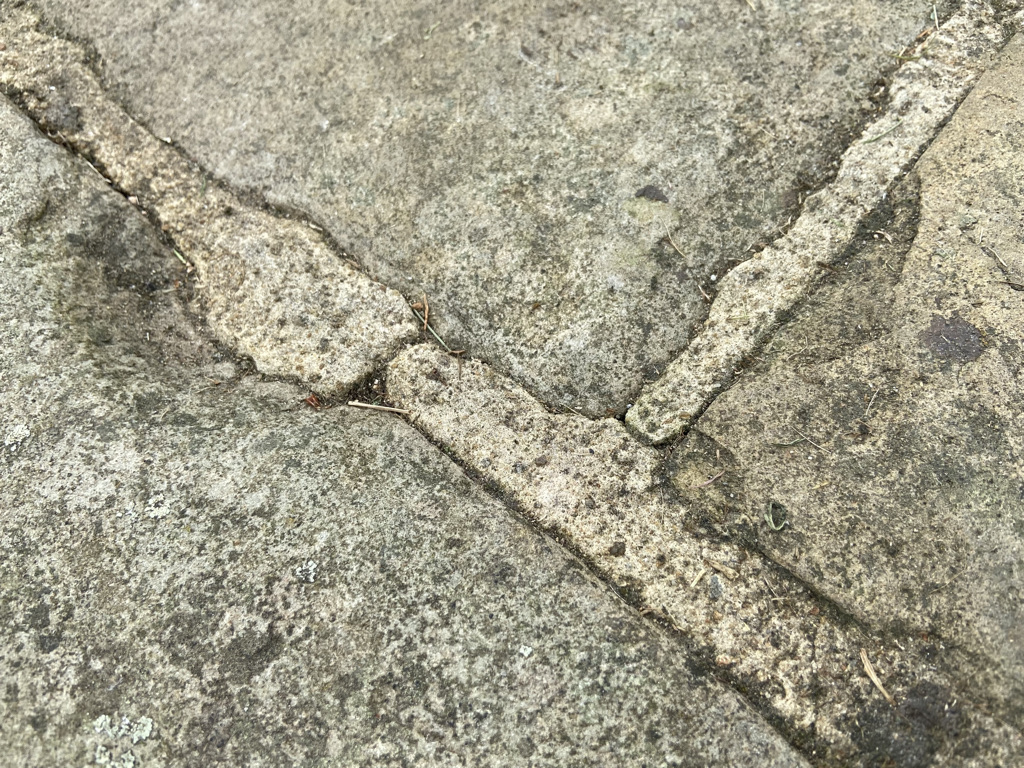
I add this with the caveat that mortar between slabs isn’t always a good thing because it prevents water drainage, making it impermeable, and stops plants growing through, which is what I want. However, in gardens where the paving is minimal and water directed into lush surrounding beds, this option can make sense. It’s the only way to stop plants growing through long-term.
Weeds usually grow through or in broken pointing in joints. On permeable patios, this is less of an option as kiln dried sand is used and weeds are kept under control with regular weeding. Remove the weeds and add the pointing back in, it can be good to work with a professional to ensure it lasts for years.
For the best of both worlds, you could point the main areas of the patio you use, such as around a table or chairs, and leave unpointed around the outsides. That way you have a usable space and some areas with plants growing through for that beautiful effect of a colourful patio.
My progress so far…
Beginning. How our patio had grown, which was my fault for not getting on top of the weeds early.
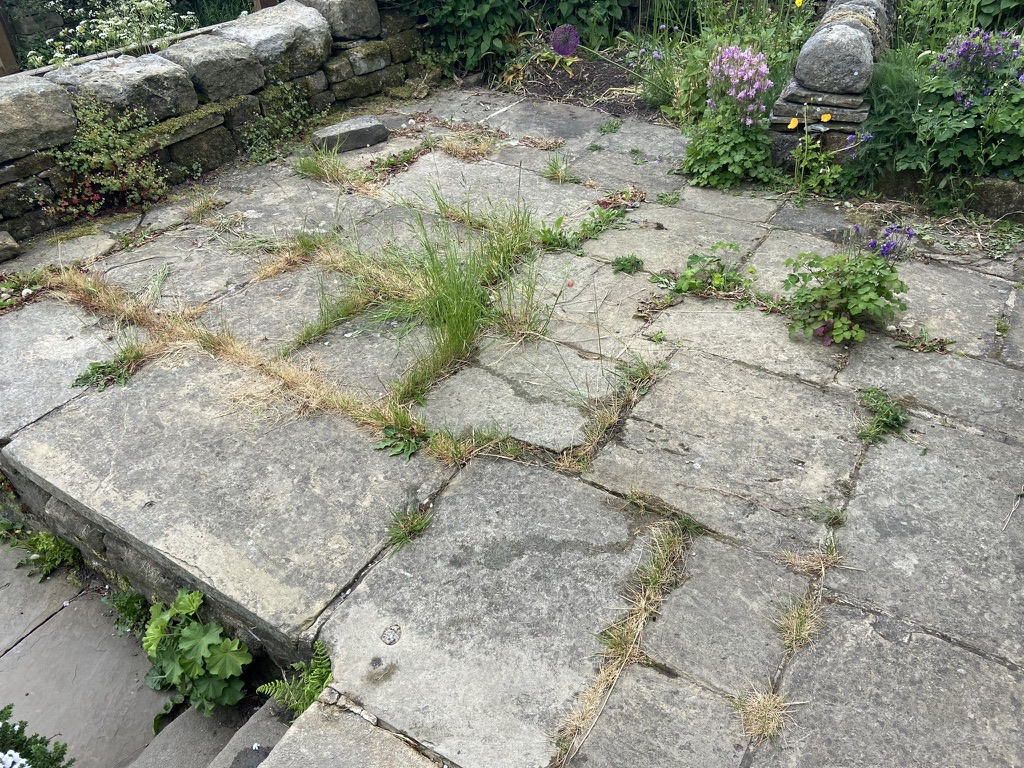
First attack. After a first round of boiling water and scraping. The green plants left are those I want to keep.
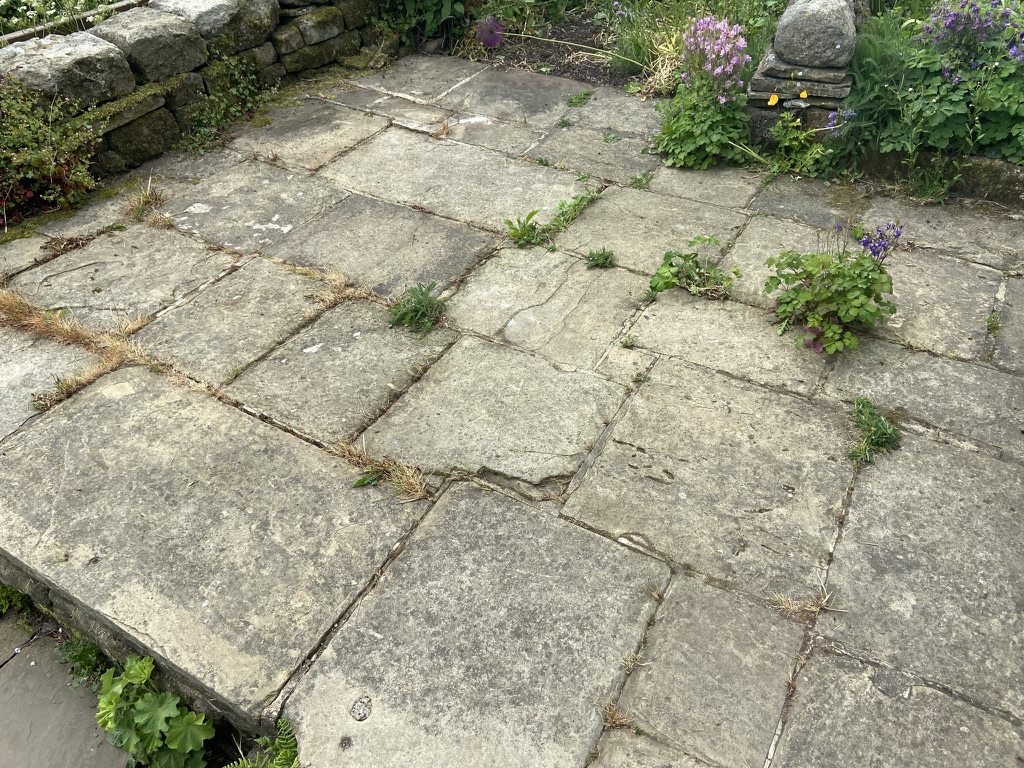
Come back for more updates soon – stay tuned folks!
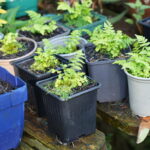



I did not get the answer I was looking for. I have a beautiful Salva via Hotlips plant and there’s dead ones and I don’t know if I’m supposed to cut the long dead stems off at the bottom or not
Hi Susan,
If you’d like to yes, salvias are happily pruned. I’ve explained everything in my salvia guide here: https://www.jackwallington.com/how-to-prune-salvias-three-pruning-groups/
Jack
About to tackle the paved mess in our garden – patio-emerging-in-spring photos please, to motivate me!